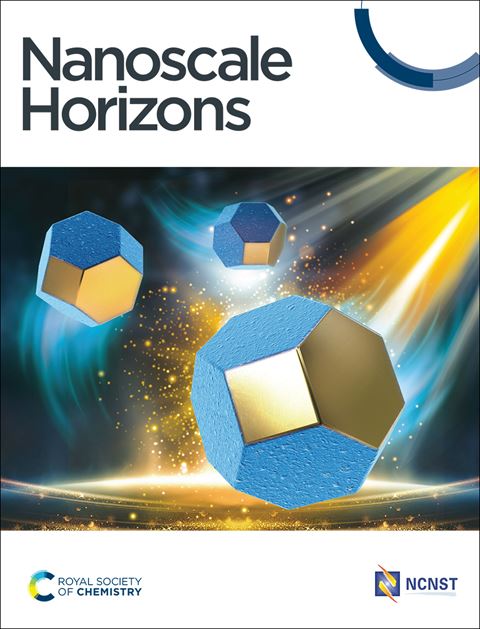阐明氧化在二维硅纳米片中的作用。
IF 8
2区 材料科学
Q1 CHEMISTRY, PHYSICAL
引用次数: 0
摘要
我们报告了一种合成方案,可以产生端氢的二维硅纳米片,其硅氧烷(例如Si-O-Si, OxSi)含量大大降低。这些纳米片在610 nm附近显示出微弱、宽的光致发光,绝对光致发光量子产率低(低至0.2%)。通过有意氧化,纳米片的光致发光峰发射波长蓝移至510 nm,量子产率提高了一个多数量级,达到8.5%。这些结果表明,二维硅纳米片的氧化调节了材料的带隙,并表明先前报道的这种材料的光致发光特性部分是由氧化引起的。本文章由计算机程序翻译,如有差异,请以英文原文为准。

Elucidating the role of oxidation in two-dimensional silicon nanosheets†
We report a synthetic protocol that yields hydrogen-terminated 2D silicon nanosheets with greatly reduced siloxane (e.g., Si–O–Si, OxSi) content. These nanosheets displayed weak, broad photoluminescence centered near 610 nm with a low absolute photoluminescence quantum yield (as low as 0.2%). By intentionally oxidizing the nanosheets, the photoluminescence peak emission wavelength blueshifted to 510 nm, and the quantum yield increased by more than an order of magnitude to 8.5%. These results demonstrate that oxidation of 2D silicon nanosheets modulates the material's bandgap and suggests that previously reported photoluminescence properties for this material resulted, in part, from oxidation.
求助全文
通过发布文献求助,成功后即可免费获取论文全文。
去求助
来源期刊

Nanoscale Horizons
Materials Science-General Materials Science
CiteScore
16.30
自引率
1.00%
发文量
141
期刊介绍:
Nanoscale Horizons stands out as a premier journal for publishing exceptionally high-quality and innovative nanoscience and nanotechnology. The emphasis lies on original research that introduces a new concept or a novel perspective (a conceptual advance), prioritizing this over reporting technological improvements. Nevertheless, outstanding articles showcasing truly groundbreaking developments, including record-breaking performance, may also find a place in the journal. Published work must be of substantial general interest to our broad and diverse readership across the nanoscience and nanotechnology community.
 求助内容:
求助内容: 应助结果提醒方式:
应助结果提醒方式:


